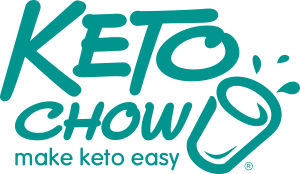In the simplest terms, a “natural” ingredient means it is derived from something found in nature. That could be something like the red from beets or orange from carrots, but it would also cover poisonous and dangerous compounds from other sources. “Natural” does not mean “better” it’s simply a way to designate the origin. An “artificial” ingredient means that it’s created by combining compounds together. By the strictest definition, you can create “artificial” water and carbon dioxide in a lab using oxygen, heat, and fuel to make fire.
As far as Keto Chow goes, here are the colorings that are used in various flavors. Several of the different flavors of Keto Chow contain no coloring at all:
- Savory Chicken Soup
- Spicy Taco Soup Base
- Creamy Tomat Basil
- Beef Soup Base
- Chocolate
- Chocolate Peanut Butter
- Cookies and Cream
- Snickerdoodle
- Vanilla
- S’mores
- Mocha
Raspberry Cheesecake has 0.4g of beet extract and 0.04g of Elderberry extract – these are what would be called “natural” colors and they fade to a greyish purple over the course of a few hours. Strawberry and Natural Strawberry use 0.2g of the same beet extract, which does still fade but without the purple from the missing Elderberry coloring.
Banana uses 0.03g of Tumeric. The same color system is used for Lemon Meringue.
Eggnog has 0.035g of beta carotene, it comes from carrots and tints Doritos the orange color you’re familiar with. Although technically it’s a source of an inferior source of vitamin A, we don’t declare that on the nutrition panel because humans don’t convert beta carotene to retinol (true vitamin A) at a very efficient rate.
Chocolate Mint has 0.06g of GNT Blue and 0.04g of Colorcon Green. Pistachio has the same coloring blend.
Pumpkin Spice Caramel uses 0.4g of beta carotene, as well as 0.275g of caramel color. There is 0.4g of Caramel color in Salted Caramel, 0.537g in the Chocolate Toffee, and 0.538g in Root Beer Float.
Orange cream has 0.4g of beta carotene, 0.025g of “Orange Blend N”, and 0.022g of Dye Lake Blend 1488.
To quote Wikipedia: “A lake pigment is a pigment made by precipitating a dye with an inert binder, or ‘mordant’, usually a metallic salt. Unlike vermilion, ultramarine, and other pigments made from ground minerals, lake pigments are organic.”
The simple way of thinking of pigments are they’re ground up minerals, whilst dyes are extracts of organic compounds, often plants or synthetic organic compounds.








Leave A Comment